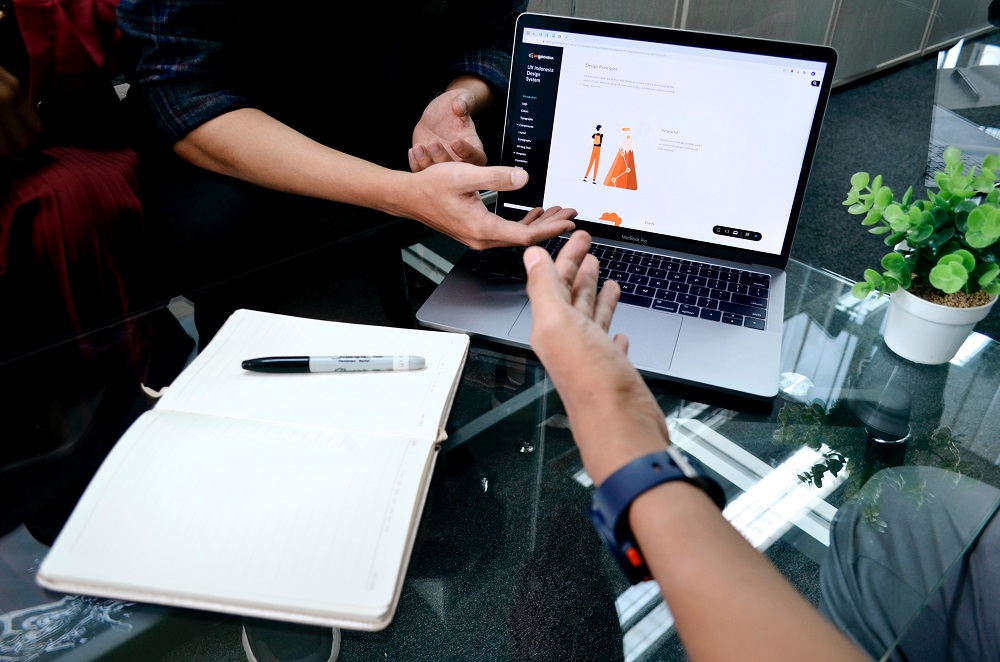Best Practices for Conducting User Research as a New UX Designer

Embarking on a journey as a new UX designer is an exciting and rewarding endeavor. However, one of the fundamental skills you’ll need to develop is user research. Effective user research forms the bedrock of creating user-centered designs that truly resonate with your target audience. As someone who has been through this journey, I’d like to share some best practices for conducting user research as a new UX designer.
Start with a Clear Research Goal
Before diving into user research, it’s essential to have a clear goal in mind. Ask yourself: What do you want to learn or achieve through this research? Are you trying to understand user behavior, identify pain points, or gather insights for a new design project?
Having a well-defined research goal not only guides your efforts but also helps you choose the most appropriate research methods and ensures that you stay focused throughout the process.
Get to Know Your Users
Understanding your users is at the heart of user research. Start by creating user personas, fictional representations of different segments of your target audience. Dive into demographics, behaviors, motivations, and pain points. Personas provide a human face to your users, making it easier to empathize with their needs and preferences.
Don’t stop at personas; actively engage with your users. Conduct user interviews, surveys, and usability tests to gather real-world insights. These interactions will help you gain a deeper understanding of their challenges, motivations, and goals.
Choose the Right Research Methods
User research encompasses various methods, each suited to different objectives and stages of the design process. As a new UX designer, it’s crucial to familiarize yourself with these methods and choose the ones that align with your research goals.
Some common user research methods include:
- Surveys: Use surveys to collect quantitative data from a large number of users. Surveys can help you gather broad insights and identify trends.
- User Interviews: Conduct one-on-one interviews to delve deeper into user experiences, motivations, and pain points. Interviews provide rich qualitative data.
- Usability Testing: Test your designs with real users to identify usability issues and gather feedback on specific interactions.
- Contextual Inquiry: Observe users in their natural environment to understand how they interact with products or services in real-life situations.
- Card Sorting: Use card sorting exercises to gather insights into how users categorize and organize information.
- A/B Testing: Run controlled experiments to compare different design variations and determine which one performs better.
Each research method has its strengths and weaknesses, so choose the ones that best suit your research objectives.
Plan Your Research Carefully
Effective user research requires meticulous planning. Create a research plan that outlines your objectives, target audience, research methods, timeline, and budget. Having a well-structured plan not only keeps your research on track but also helps you communicate your intentions to stakeholders.
Consider logistics, such as recruiting participants, scheduling interviews, and preparing research materials. Ensure that you have the necessary tools and resources to conduct your research effectively.
Recruit the Right Participants
Recruiting the right participants is essential for meaningful user research. Your participants should represent your target audience as closely as possible to ensure the insights you gather are relevant.
Consider factors like age, gender, location, and familiarity with the product or service. If your target audience is diverse, aim for a diverse group of participants to capture a wide range of perspectives.
Recruitment can be a challenge, but there are various methods you can use, such as online user testing platforms, social media, or reaching out to existing users or customers.
Create Open-Ended Questions
When conducting user interviews or surveys, craft open-ended questions that encourage participants to share their thoughts and experiences in their own words. Open-ended questions elicit more detailed and insightful responses compared to closed-ended questions that can be answered with a simple “yes” or “no.”
For example, instead of asking, “Do you like our website?” you might ask, “What do you like and dislike about our website, and why?”
Listening actively to your participants and allowing them to express themselves freely can uncover valuable insights that shape your design decisions.
Be a Neutral Facilitator
During user research sessions, it’s crucial to maintain objectivity and avoid leading participants or introducing bias. Be a neutral facilitator, and refrain from expressing personal opinions or guiding participants toward specific answers.
Create an open and non-judgmental environment where participants feel comfortable sharing their honest thoughts, even if they differ from your assumptions or expectations. Remember, the goal is to uncover user insights, not to validate your existing ideas.
Analyze and Synthesize Findings
Once you’ve gathered data through user research, the next step is to analyze and synthesize your findings. This involves identifying patterns, trends, and key takeaways from your research.
Consider creating affinity diagrams or user journey maps to visualize the user experience and identify pain points or areas for improvement. Use tools like spreadsheets or dedicated user research software to organize and categorize your data efficiently.
The analysis process should lead to actionable insights that inform your design decisions. Look for recurring themes, prioritize issues based on their impact, and consider how each finding aligns with your research goals.
Share Your Insights Effectively
Communicating your research findings effectively is just as important as conducting the research itself. Create clear and concise reports or presentations that highlight key insights, supported by evidence from your research.
Tailor your communication to your audience. While stakeholders may appreciate a high-level summary, your design team may benefit from a more in-depth discussion of the findings and their implications for the project.
Consider using visual aids, such as charts, graphs, or user personas, to make your insights more digestible and engaging. Sharing your research findings helps build a shared understanding among team members and stakeholders, ultimately leading to more user-centered design decisions.
Iterate and Apply Insights
User research is not a one-time activity but an iterative process. As you progress through the design cycle, continue to conduct research to validate assumptions, test design solutions, and gather feedback.
Apply the insights you’ve gained from user research to inform your design decisions. Whether you’re creating wireframes, prototypes, or final designs, keep the user’s perspective at the forefront of your mind. Iterate based on user feedback and continually refine your designs to align with user needs and expectations.
Seek Feedback and Collaboration
As a new UX designer, don’t be afraid to seek feedback and collaborate with your team members. Design is a collaborative process, and valuable insights can come from colleagues with different perspectives and expertise.
Share your research findings with your design team, developers, and product managers. Encourage open discussions and brainstorming sessions to generate innovative solutions. Be receptive to constructive criticism, and don’t hesitate to iterate on your designs based on feedback.
Stay Curious and Continuously Learn
User research is a dynamic field that evolves alongside technology and user behavior. To excel as a UX designer, stay curious and committed to continuous learning. Keep up with industry trends, attend UX conferences, and read books and articles on user research best practices.
Engage with the UX design community through forums, social media, or local meetups. Learning from experienced professionals and exchanging insights with peers can help you grow as a UX designer.
Conclusion: Building User-Centered Designs
User research is the compass that guides UX designers toward creating user-centered designs. As a new UX designer, it’s essential to embrace these best practices to develop the skills and mindset needed to conduct effective research.
Start with a clear research goal, get to know your users, and choose the right research methods. Plan your research carefully, recruit the right participants, and create open-ended questions that encourage honest responses. Be a neutral facilitator, analyze and synthesize your findings, and share your insights effectively.
Remember that user research is an ongoing process that informs your design decisions and leads to iterative improvements. Seek feedback and collaborate with your team, and never stop learning and staying curious about the ever-evolving field of user-centered design.
As you embark on your journey as a new UX designer, user research will be your trusted companion, guiding you toward building interfaces that not only look great but also provide exceptional user experiences.
ABOUT AUTHOR

Alison Housten
Lorem ipsum dolor sit amet, consectetur adipiscing elit. Ut elit tellus, luctus nec ullam.

RECENT POSTS

